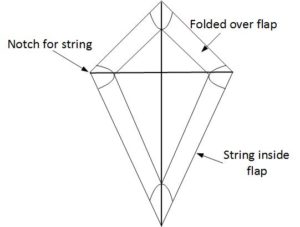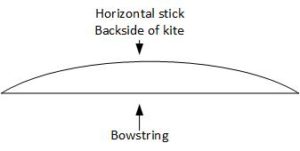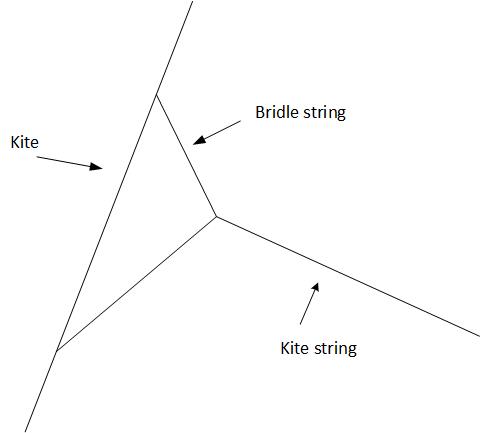Many how-to books have been written on novel writing, and most aspiring writers probably has sampled many of them. But as we all know, although they can provide guidance, no set of hard and fast rules exists. If they did, computers would write everything and we all would be out of a job.
The situation is summarized by the famous quote from W. Somerset Maugham –
“There are three rules for writing a novel. Unfortunately, no one knows what they are.”
Nevertheless, guidelines and so-called rules are good to know about. At the very least, provide a checklist one can check their writing against to see if some additional tweaks can change something that might be good into something that is great. In that spirit, this blog and the two following will discuss three books
Contagious by Jonah Berger
Save the Cat by Blake Snyder,
and
The Fantasy Fiction Formula by Deborah Chester
The first two are not how-to books for writing a novel, but I have found it helpful to look at them through the lens of an author rather than that of the intended audiences.
###
Contagious –Why Things Catch On, is an exploration of what causes certain products, ideas, and behaviors to be talked about more than others. Jonah Berger is a marketing professor at the Wharton School at the University of Pennsylvania. I found the book to be quite informative and entertaining. It is filled with examples from real life and backed up by quantitative research.
As Berger explains, things go viral because of word of mouth (well, duh!). But quite surprisingly, only 7 percent of word-of-mouth occurs on-line. Most of it happens in face-to-face conversation. From his research, Berger concludes that something going viral possesses one or more of six important characteristics of contagiousness:
- Social currency: — makes us seem more interesting to others.
- Triggers: — is connected to things in our environment that recur repeatedly
- Emotion: — creates an emotional response
- Public:– is visible to others
- Practical value:– is useful
- Stories: — is communicated by telling a story
Of course, to understand the details of what each of these labels really means, you would have to read the book. It was published in 2013. But for a more recent simple example of why someone engages in word of mouth, consider the explosion of interest in Pokémon Go by almost everyone. A person talks about Pokémon Go because:
- He can tell others how many Pokémon he has captured and where he found them. He shows he is playing the game well. — Social currency
- Every time he picks up his cellphone, he is reminded of the game — Triggers
- He has a feeling of nostalgia about when he was much younger when he plays the game. — Emotion
- He sees all these other people walking around that are also staring at their phones – Public
- He feels good that he is exercising. After all, exercise is a good thing – Practical value
- He can tell others what happened last night when hundreds people converged on the coffee shop. — Stories
###
OK, Contagious is an interesting read. However, what does it have to do with writing?
Well, think about it. Books are products marketed and sold primarily by word of mouth. So, the question arises — what can an author do to give a novel one or more of the six characteristics that increase its chances of going viral?
The following is the result of a mental exercise of trying to apply what I learned from Contagious to writing fantasy novels. As you will see, nothing I came up with is earth shaking; all are just little tweaks. I did not discover one of the three unknown rules of novel writing.
But the exercise of looking at things through the lens of a writer seems to me to be a good thing to do.
Social currency
Berger discusses three subcategories in Contagion: sharing a secret, relating performance in playing a game, and passing on something remarkable.
Maybe someone else can see how to incorporate one of the first two concepts into the act of writing, but I didn’t. The third, however, presents possibilities.
Berger gives the example: “A ball of glass bounces higher than a ball of rubber” – a fact to relate to a friend. As authors, we probably all have a store of such trivia stashed away in our heads. When I read about bouncing balls, one immediately came to mind from over five decades ago. It was “Mouse milk costs over $300 an ounce.”
Thanks to the Internet, I was immediately able to verify this and learned that mouse milk did cost over $300 an ounce, but that was in 1947. Now it is down to $1 an ounce – probably due, I am guessing, to the improvement in mouse milking machines.
Now, it probably is a challenge to work mouse milk into a fantasy and make clear to the reader that the cost being talked about is for our own world, but I think the basic idea is a good one to keep in mind. In sword and sorcery, for example, there is a lot of medieval weapon vocabulary that might be of interest to a reader and something to chat about with a friend. In my first book, Master of the Five Magics, I used a lot of words dealing with the architecture of castles. After all, literature elucidates as well as entertains.
Triggers
Marketing lore for writers tells us that a part of a well-orchestrated campaign prior to the publication date is to get many on-line reviews. There are many websites that talk about how to find on-line reviewers, politely ask them if they are interested in reviewing your book, and (under the radar) get agreement to trade reviews.
One piece of advice that struck me about review solicitation, however, was a discussion of the mental attitude of the reviewer. Does one really want someone to comment on what you have done, not because he freely choose to do so? Would not he feel an obligation to make the review a little more negative so it is “well-balanced”?
Yes, yes, even negative reviews are worthwhile. Berger comments that for new or relatively unknown authors, negative reviews increased sales by 45%. But, one of the key points of Berger’s chapter on triggers, however, is that the more powerful triggers are recurring ones, not ones that just occurred once and then were done.
That suggested to me that perhaps something to consider is solicitation of reviews all right, but not to bust a gut for a new book’s rollout. Instead, after the book has been out there and, presumably, got some good reviews at the outset, then periodically and continually start asking for more. If bad reviews are good for sales anyway, then a steady stream of them perhaps could help one’s book ‘break out’ and go viral. The repetition of reminders is the key.
Emotion
Of course, all writers hope that what they have written is good enough that a deep emotional response is generated in the reader. From the standpoint of going viral, however, the results of Berger’s research concluded that not all emotions are equally effective in generating word of mouth referrals.
He lists the ones more likely to contribute to virality are: awe, excitement, amusement, anger, and anxiety. Ones least likely are contentment and sadness.
Interesting. Action/adventure novels do strive to create excitement and anxiety. Humorous novels are fun to read (and hard to write). But awe? It ranks right up there in the experimental results, and I had never considered it in the context of fantasy.
How does one create awe in a fantasy? I don’t know. But perhaps this is what in science fiction refers to as “a sense of wonder”. If so,Berger is saying fantasy should strive to create the same feelings as well.
And sadness is not so powerful? A well-written tragedy might well generate a deep feeling of sympathetic grief in the reader. But from the standpoint of word of mouth, sadness is not a strong characteristic. Evidently, few people want to be identified as a communicator of downers.
Public
For books, this is a hard one. Book reading, by in large, is a solitary activity. You might just eat up a L. Ron Hubbard decalogy, but no one watches you doing it.
So I did not come up with something for this characteristic. Well, as Berger says, not all six are necessary.
Practical value
There are possibilities here. Yes, as authors we want to write great stories – great escapes in which the real world is left behind. But inserted into the stories can be mini-stories — tips that can apply in real life as well as fantasy. These do not have to be long elaborate things that drive the plot, but such things as, well maybe — how to distract someone’s attention away from a doorway…
Buy a strip of caps for a cap gun (do they still make these things?) and some air riffle bbs. Wrap a cap around a bb and place them in the middle of a small square of tissue that is about 1 inch on a side. Gather the four corners of the square together and twist until the bb and cap are firmly secured to one another. Smooth out the tissue above the twist into a flowing tail. Make a handfull more of these the same way.
Then when the collection is tossed into the air near the target, the light tissue tails and heavy bbs will force the caps to hit the ground first. There will be a pop-poppa-poppa-pop sound, and the target will turn to investigate what is causing the noise. While he is distracted, you can now rush through the door. Remember, you heard it here first.
Stories
Well, of course, the novel itself is a story. One does not want the whole thing given away when one reader is talking to another. But how about something like the backstory of one unusual character — not critical to what transpires, but something that is interesting to talk about.
For example, perhaps someone like Gladstone Gander…
Carl Barks, the cartoonist of many of the Walt Disney comics invented Gladstone Gander in 1948. He was the world’s luckiest duck. (How he was both a gander and a duck was never explained).
In one adventure, Gladstone was sunning himself at the beach – on his back, completely relaxed with his hands spread out. palm down on the sand. Donald Duck and his three nephews show up in order to look for a large ruby lost the year before. The ducks agree that one-half of the beach is Gladstone’s to search and other half Donald’s.
While Gladstone does nothing but continue to sun himself, Donald and his nephews sift all of the sand in their half of the beach and find nothing. A new deal is agreed to. Gladstone allows Donald to search half of his half of the beach but anything that they find must be split 50-50.
Still no ruby. Another deal allows Donald to sift half of Gladstone’s beach that remains unexamined, but for only one quarter of what is found. And so on. Eventually everything has been searched except of the ground directly under the gander. Donald gives up – totally exhausted after all that work and nothing to show for it.
As Gladstone rises from the sand to join the others, he feels something under the palm of one of his hands. Yes, it is the lost ruby. Well, of course, he is the world’s luckiest duck.
Gladstone was never a central character in any of Bark’s work, but he was well remembered and talked about.
OK, exercise over. For me, it was a fun thing to try. Six more things to think about when writing the next novel.
Next time, I will be discussing Save the Cat.
© 2016 Lyndon M. Hardy





